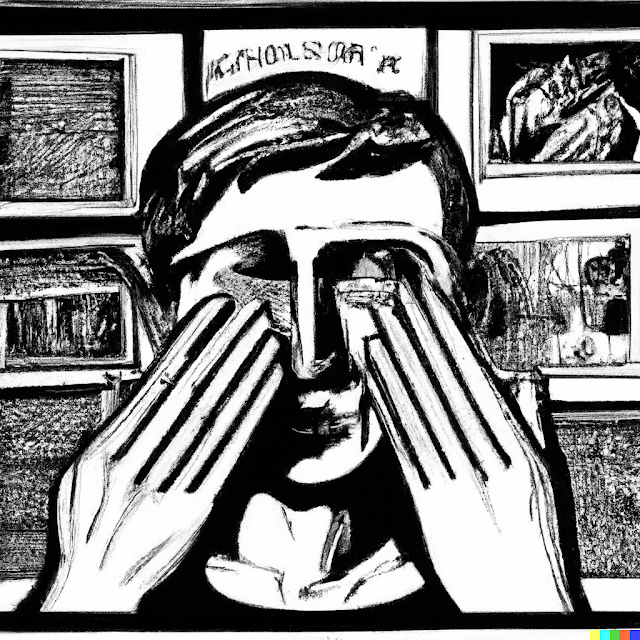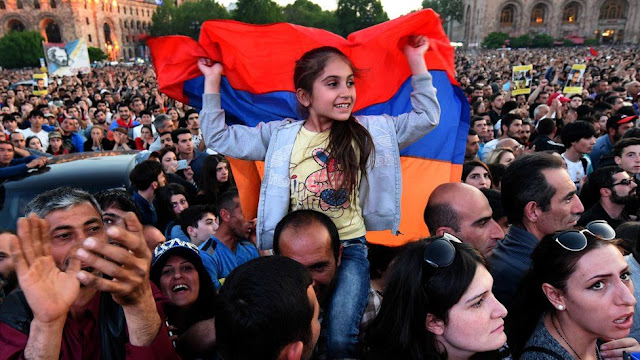Self-Censorship In Armenia
Censorship is a predominant issue in Eastern Europe that reaches the Caucuses, where Armenia is located. Since the drop of the Soviet Union, Armenia has had an interesting and complicated relationship with Russia. Unlike Russia’s President Putin and the Kremlin's extreme censorship over media, Armenia is becoming more diverse after the Velvet Revolution, but the media remains schismatized. And while Armenians often face multiple levels of disinformation and fake news, the journalists in the country face numerous challenges that lead to additional poor coverage. Censorship against journalists in Armenia is a reminder of the echoing past of the Soviet Union; although the Velvet Revolution began to welcome democratic ideas of the western world, the government has still failed to reduce the media’s polarization.
Media in Armenia was relatively dictatorial and not free after the collapse of the Soviet Union. Armenian journalists then faced occasional threats, violence, and intimidation that created adverse conditions for them to feel like they could practice freedom of expression. Sadly this is a significant reason why journalists decided to self-censor themselves. Yet, the Armenian constitution guarantees freedom of speech, and the country has signed and authorized 58 conventions, such as the European Convention of Human Rights, that protest freedom of expression, according to the Ministry of Foreign Affairs of the Republic of Armenia (MINISTRY OF FOREIGN AFFAIRS OF THE REPUBLIC OF ARMENIA, 2013). Armenia in 2012 also participated in OSCE, which protects freedom of media, freedom of expression, and the free flow of information. But still, journalists have faced threats to their opinions (Vareljyan & Ghazaryan, 2013). Incidents of physical assaults and threats towards journalists have been coined to occur most during elections, which did occur in 2012. One of these attacks was on journalist Elina Chilingaryan from the “Freedom” radio station. While video shooting in front of the doors of the Parliament during the elections, a young man approached her and hit her twice to grab her camera. The journalist could not manage to save the camera, leaving the area without it. Hetq reports that “Elina Chilingaryan filed a statement to the police about the incident on the grounds of part 1 of article 164 of the Criminal Code.”(Vareljyan & Ghazaryan, 2013) Although the police conducted a formal investigation and collected materials for the criminal case, the police closed the criminal cases for lack of a crime or a criminal offense, supporting the bias of legislative bodies in Armenia. It is evident that media is entirely controlled by pro-government political circles during this time.
The Velvet Revolution in 2018 was the hope that the government would change with the new Prime minister Pashinyan. The Velvet Revolution was made up of peaceful protest that lasted a month by the Armenian public to fight Serzh Sargsyan's third consecutive term as a powerful kleptocratic Prime Minister. This was when Pashinyan became the new Prime Minister who urged democratizing the country and reform from the republican party. Pashinyan is an educated journalist that rose in popularity. After the revolution, the media landscape progressed. However, the only way it has changed is by becoming more divided because of a significant amount of media was controlled by allies from the previous regime.
According to Reporters Without Borders (RSF), the revolution enabled independent online sites like “Civilnet.am, hetq.am, Factor.am and Azatutyun.am” to be an essential to broadcast democracy. RSF still explains that media affiliated with prominent political and business interests are pressured on their editorial policy. They say, “anti-media rhetoric from political elites, who accuse journalists of “corruption” and of being in the service of their adversaries, creates a climate of intolerance that hinders reporters’ work. They are constantly insulted, assaulted, and subject to abusive prosecution for calumny, which reinforces self-censorship.” (“Armenia | RSF,” n.d.) Only a handful of independence belongs to the journalists, and in the media landscape, the rest is filled with threats from the Armenian aristocrats, nevertheless generating fake news for the rest of the population.
Today, Armenian journalists and media are still dealing with censorship and self-censorship. While it is not so widespread as before, the recent war named Nagorno-Karabakh, sparked by Azerbaijan, has created tension in the discussion about the disputed territory. According to Freedom House, a research group that reports on issues related to democracy, political rights, and civil liberties, says that “Yerevan Today, a news outlet, mentioned that it had refrained from commenting on certain issues in Nagorno-Karabakh and felt the pressure of martial law and the new Republic of Armenia Code on Administrative Offense.” (“Armenia: Freedom on the Net 2021 Country Report,” n.d.) In addition, after martial law was implemented, media and journalists were discouraged to report in case of endangering national security, however, not realizing that this was also potentially endangering the people of Armenia. In addition a decree adopted on 8 October 2020 bans the publishing of information critical of the government, civil servants and local administrations. The threat of fines and the restrictions create both censorship and self censorship problem for journalists and the networks and companies they may work at. Though this all is happening after the 2018 Velvet Revolution, it is reminding the country, the citizens, and the journalists that the progression has not gone that much further.
Moreover, in 2021, Vice President Alen Simonyan proposed legislation “On Amendments to the Civil Code of Armenia,” which will fine for harm in the case of insult which will increase from one million to three million drams (Armenian currency) and two million to six million in defamation cases. And even when the bill had been criticized by the public, politics, and media, it was still called to be compatible with the constitution.
By: Emma Garibian
Journalism Student At Rutgers University




.png)
.png)

Comments
Post a Comment